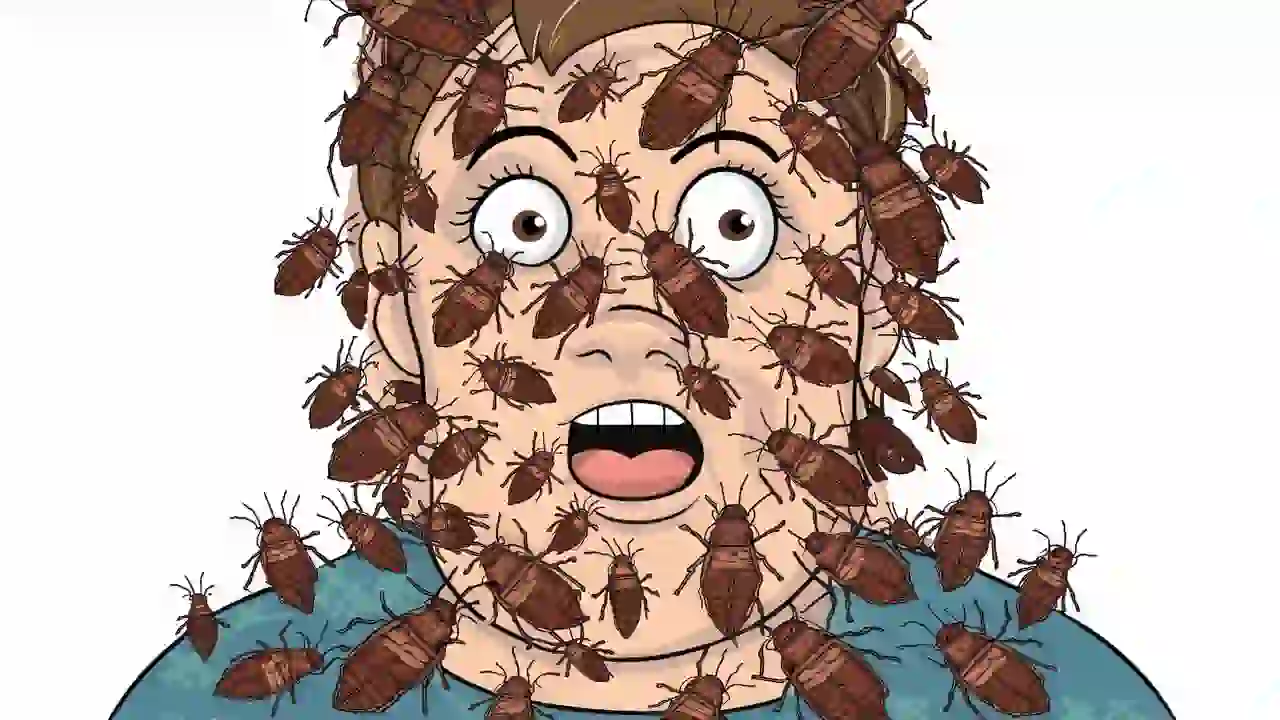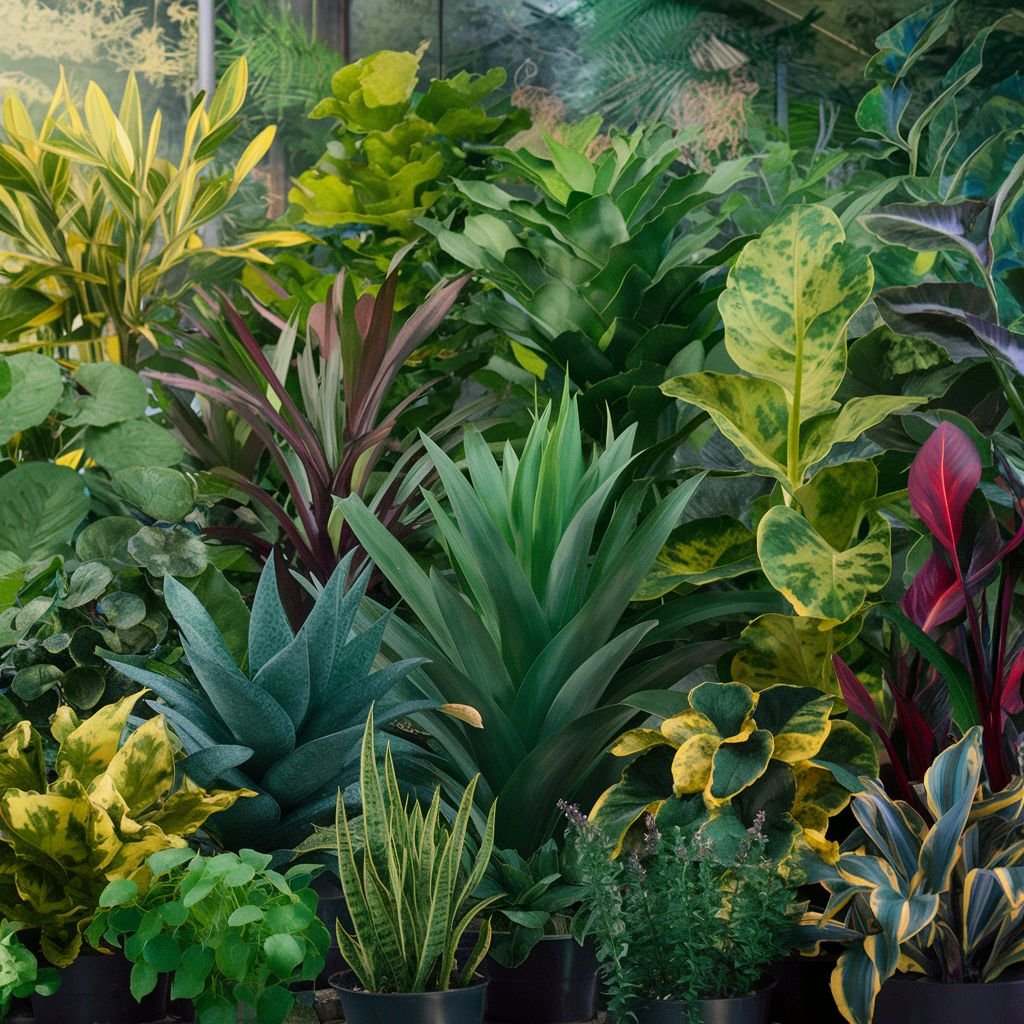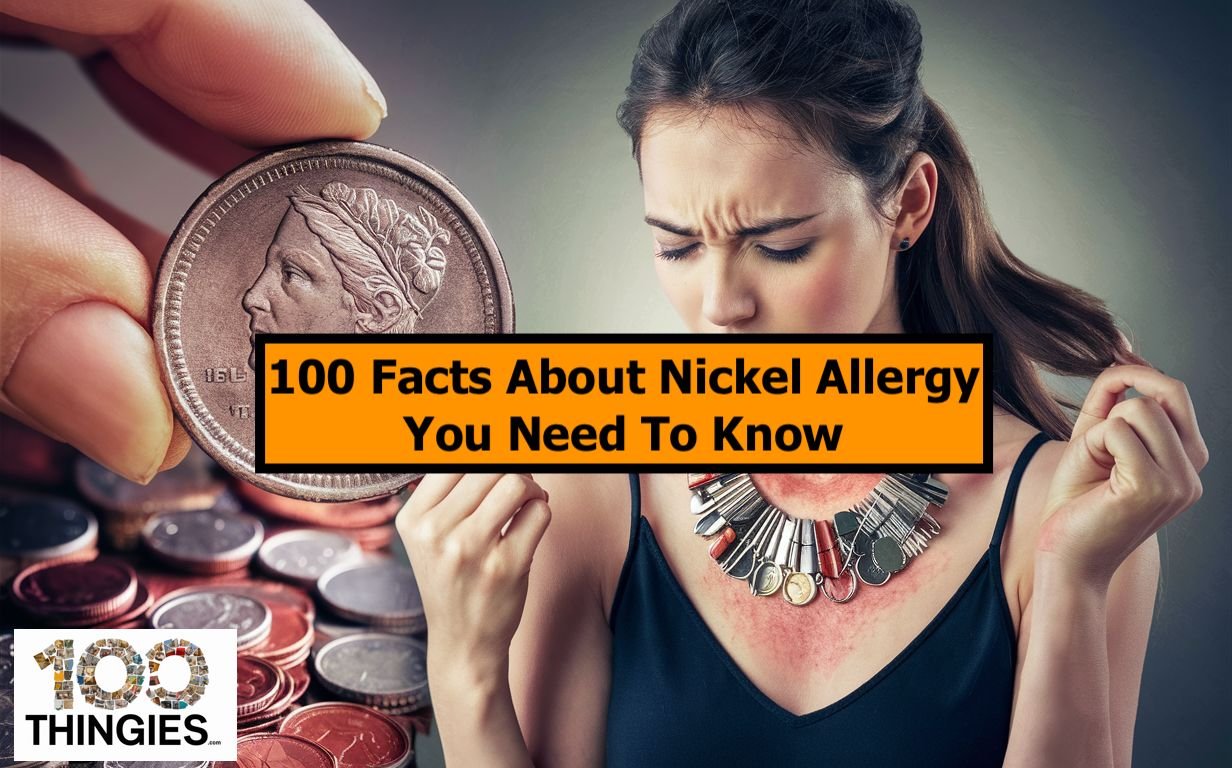Let’s talk about allergies. Don’t worry. There’s no allergen in this article that can make you sneeze! That’s actually a fact! We’ve put together 100 facts about allergies, which we think should be fun to read; I mean, you won’t be sniffling it unless you have some household allergens and other allergic thingies lurking around. We’ll explore some fascinating, sometimes quirky, but always interesting facts about allergies. From the foods that make us sneeze to the environments that make our eyes water, allergies are as widespread as they are diverse. So, let’s sniff out what makes allergies so intriguing!
1. Allergies Are a Modern Epidemic
Allergies have been on the rise globally, especially in industrialized countries. This increase is partly attributed to the “hygiene hypothesis,” which suggests our cleaner living environments might be too clean, reducing our exposure to microorganisms that help develop the immune system.
2. Pollen Is the Most Common Allergen
Pollen from trees, grass, and weeds is the most common cause of allergies. It’s nature’s way of saying, “I’ll make you remember springtime, whether you like it or not.”
3. Allergic to Cold? It’s Possible!
Cold urticaria is an allergy to cold temperatures. Exposure to cold air or water can cause hives, swelling, and, in severe cases, anaphylaxis. For some, a snowball fight could actually be a health hazard.
4. Food Allergies Are on the Rise in Children
Food allergies in children have increased by about 50% in the last decade. It seems like peanuts have gone from a popular snack to public enemy number one in classrooms around the world.
5. The Most Allergic City in the US this 2024

According to the Asthma and Allergy Foundation of America, Wichita, Kansas, has been named the most challenging city to live in for allergy sufferers multiple times. Residents might argue it’s not the heat or the humidity; it’s the histamines.
6. Pets Can Have Allergies Too
Just like humans, pets can suffer from allergies. Their reactions can include itching, sneezing, and watery eyes. Yes, your dog might be sneezing because of pollen, not because he’s mimicking you.
7. Shifting Seasons Affect Allergies
Climate change is leading to longer allergy seasons. As spring arrives earlier and fall lasts longer, the amount of pollen in the air increases, making many of us wish for a fast-forward button through these seasons.
8. Allergies Can Develop Anytime
You can develop an allergy at any age, even if you’ve never had one before. So, just when you thought you were safe from the tyranny of ragweed, adulthood has another surprise for you.
9. Not Just Sneezes and Itches
Severe allergies can lead to anaphylaxis, a life-threatening reaction that requires immediate treatment with epinephrine. It’s the ultimate “I can’t believe I’m allergic to this” moment.
10. There’s a Town for Allergy Sufferers
The small town of Wimberley, Texas, has been dubbed an allergy sufferer’s haven due to its location and climate, which reduce the presence of common allergens. It’s like a sneeze-free utopia.
11. Fruit and Vegetable Allergies Linked to Pollen
Oral Allergy Syndrome (OAS) is caused by cross-reactivity between pollen and raw fruits or vegetables. If eating an apple makes your mouth itch, blame it on birch trees.
12. Allergic to Exercise
Exercise-induced anaphylaxis is a rare condition where physical activity can trigger serious allergic reactions. For some, “I’m allergic to exercise” is a legitimate excuse.
13. Penicillin: Not So Common After All
Though commonly reported, true penicillin allergies are rare, affecting only about 1% of the population. Many who think they’re allergic might not be, leading to the use of less appropriate antibiotics.
14. Nickel Allergies and Technology
With the prevalence of electronic devices, nickel allergies are becoming more common. It turns out that holding a smartphone can be more irritating than waiting for it to charge.
15. Wine Allergies
Some people are allergic to compounds found in wine, such as sulfites or histamines, making a simple glass of wine a potential trigger for headaches and sneezing. It’s nature’s way of enforcing moderation.
16. Latex: A Sticky Allergen
Latex allergies can cause reactions ranging from skin irritation to anaphylaxis. This makes balloon animals and certain types of gloves potential hazards.
17. Dust Mites: The Unseen Allergens
Dust mite allergies are caused by tiny bugs that thrive in household dust, feeding on dead skin cells. They’re the roommates you didn’t know you had and definitely didn’t want.
18. Allergies and Mental Health
Allergies can impact mental health, contributing to conditions like anxiety and depression. It seems that constant battles with invisible enemies can indeed wear you down.
19. The Role of Genetics in Allergies
If both parents have allergies, there’s a 70% chance their children will have allergies too. It’s one of the less appreciated family heirlooms.
20. Allergy Shots: A Long-term Solution
Allergy shots (immunotherapy) can significantly reduce or even eliminate allergic reactions over time, offering hope to those for whom spring and fall are less about the weather and more about the wheezing.
21. Worldwide Variation in Allergies
Allergies vary significantly around the world, with some countries having higher rates of specific allergies. For example, seafood allergies are more common in countries with a diet rich in fish and shellfish, like Japan and Norway.
22. The Stinging Truth About Insect Allergies
Stings from bees, wasps, and hornets are a common cause of severe allergic reactions. It turns out, getting dumped by these insects can be more than just painful—it can be downright dangerous.
23. Chocolate Allergies: A Bitter Reality
True chocolate allergies are rare; most reactions are to ingredients in chocolate products, such as milk, nuts, or soy. Sadly, this means chocolate is off the table for some, not just because they’re dieting.
24. The Allergy-Friendly Dog Myth
No dog breed is 100% hypoallergenic. While some breeds shed less and are less likely to trigger allergies, canine lovers with allergies might still need tissues and antihistamines handy.
25. Climate Change and Allergies
Increasing global temperatures are leading to longer flowering seasons for many plants, exacerbating pollen allergies. Essentially, climate change is not just warming the planet; it’s making our noses run more too.
26. Allergies and Birth Order
Studies suggest that first-born children may be more likely to develop allergies than their younger siblings. It seems the privilege of being the oldest comes with some sniffly strings attached.
27. Rising Allergies in Urban Areas
Urbanization and pollution are linked to increasing allergy rates. City life might be exciting, but it also brings us closer to allergens and irritants that our bodies don’t always appreciate.
28. The Economic Impact of Allergies
Allergies have a significant economic impact, from direct medical costs to lost productivity. It turns out sneezes and wheezes can also affect our wallets.
29. The Mystery of Allergic Reactions to Red Meat
A sugar molecule called alpha-gal, transferred through tick bites, can cause an allergy to red meat. It’s a bizarre reminder of how interconnected our environment and health can be.
30. Fragrance Allergies: More Common Than You Think
Allergies to fragrances in perfumes, lotions, and other products affect a significant portion of the population, leading to calls for fragrance-free policies in workplaces and public spaces.
31. Mold Allergies and Damp Environments
Mold allergies are exacerbated by damp and poorly ventilated environments, making basements and bathrooms potential hotspots for allergens. It’s another reason to dislike cleaning the bathroom.
32. The Link Between Allergies and Asthma
Many people with asthma also have allergies, and allergens like pollen, dust mites, and pet dander can trigger asthma attacks. Managing allergies can be a key part of keeping asthma in check.
33. Allergies Can Affect Your Taste and Smell
Chronic nasal allergies can impact your sense of taste and smell, dulling the flavors of your favorite foods. It’s like wearing a flavor-dampening nose plug.
34. Allergic to Water? Aquagenic Urticaria
Aquagenic urticaria is a rare condition where water causes skin reactions. Imagine breaking out in hives every time you take a shower or go for a swim—it’s as inconvenient as it sounds.
35. The Increase of Peanut Allergies
Peanut allergies have more than tripled in children from 1997 to 2008, making peanut-free zones increasingly common in schools and public spaces. Peanuts have gone from snack favorite to snack non grata.
36. Skin Allergies and Eczema
Skin allergies can lead to conditions like eczema, where the skin becomes inflamed and itchy. For some, a simple thing like changing laundry detergents can be a skin-saving decision.
37. Cockroach Allergies

Cockroach droppings, saliva, and shed skin can trigger allergies and asthma, adding yet another reason to the long list of why we’d rather they keep their distance.
38. Allergy-Free Spaces
Creating allergy-free zones, especially in bedrooms, by using allergen-proof covers on bedding, can significantly reduce symptoms for sufferers, making slumber not just a dream but a sneeze-free reality.
39. The Role of Allergists
Allergists are specialized doctors who diagnose and treat allergies, offering strategies and treatments to manage symptoms. They’re like detectives for your immune system, solving the mystery of what makes you sneeze.
40. Sunscreen Allergies
Allergies to certain chemicals in sunscreen can cause reactions, making sun protection a bit more complicated for some. It’s a sunny irony that the thing meant to protect you can also hurt you.
41. Allergies and Gut Health
Emerging research suggests a strong link between gut health and allergies. A diverse gut microbiome might help prevent or reduce the severity of allergic reactions, highlighting yogurt’s status as a potential superhero in the dietary world.
42. The Allergy Capital of the World
Melbourne, Australia, has been called the allergy capital of the world due to its high pollen counts and widespread asthma. It’s a beautiful city with a sneezy downside.
43. Allergies to Gold and Silver
It’s possible to be allergic to precious metals like gold, silver, and palladium, often due to nickel or other metals mixed in. So, that itch you get from your fancy jewelry might not be envy after all. Yep, metal allergy is a thingie!
44. The Seasonality of Allergies
While spring is notorious for triggering pollen allergies, each season has its own set of allergens, from summer grass pollen to winter mold spores. Essentially, allergies are the guests that overstay their welcome year-round.
45. Kissing and Allergies

Kissing can transfer allergens to susceptible individuals. A smooch from someone who’s just eaten peanuts or shellfish could spark an allergic reaction, adding a new level of complexity to first-date questions.
46. Stress and Allergies
Stress doesn’t cause allergies, but it can worsen symptoms. It seems even your immune system can’t relax when you’re stressed out.
47. The Link Between Allergies and Sinus Infections
People with allergies are more prone to sinus infections. Allergic inflammation can block sinuses, leading to infections that add insult to injury.
48. Alcohol Can Worsen Allergies
Certain alcohols, especially wine and beer, can amplify allergic reactions due to sulfites, histamines, and other compounds. It’s a cruel twist that the very thing some reach for at the end of a long, sneezy day could make things worse.
49. Exercise Can Help…or Harm
Regular exercise can strengthen the immune system and potentially reduce allergy symptoms. However, intense physical activity can sometimes trigger exercise-induced anaphylaxis or worsen respiratory symptoms for those with asthma.
50. Climate-Induced Allergy Shifts
As global temperatures rise, plants are flowering earlier and for longer periods, leading to increased pollen production. This climate change effect is turning mild seasonal allergies into nearly year-long battles for some.
51. Rural vs. Urban Allergies
Children raised on farms or in rural areas tend to have lower rates of allergies compared to those in urban settings, supporting the hygiene hypothesis that exposure to a variety of microorganisms early in life can strengthen the immune system.
52. The Economics of Allergies
The annual cost of allergies in the U.S. is estimated in the billions, covering everything from medical treatments to lost productivity. Sneezes are expensive, it seems.
53. Pet Dander vs. Pet Hair
It’s a common misconception that pet hair is the allergen. In reality, it’s the proteins in pet dander (skin flakes), saliva, and urine that trigger allergic reactions, sticking to pet hair and everything else.
54. Famous Figures with Allergies
Even celebrities and historical figures aren’t immune to allergies. For instance, President Barack Obama has spoken about his allergy to dogs, which influenced the choice of Bo, a hypoallergenic Portuguese Water Dog, as the First Dog.
55. Natural Allergy Remedies
Some swear by natural remedies like local honey for pollen allergies, believing that ingesting local pollen can desensitize the body. While not scientifically proven, it’s a sweet attempt at relief.
56. The Nocebo Effect in Allergies
Just as the placebo effect can make people feel better, the nocebo effect can cause individuals to experience allergic symptoms without being exposed to allergens, simply because they expect to react.
57. The Role of Pollen Count
Pollen count measures how much pollen is in the air and can help allergy sufferers know when to stay indoors. It’s the weather report many check first thing in the morning during allergy season.
58. Dust Mite Solutions
To combat dust mite allergies, encasing mattresses and pillows in allergen-proof covers and washing bedding in hot water weekly are effective strategies. It’s like telling dust mites they’re not welcome to the sleepover.
59. Histamines: The Culprit Behind Allergy Symptoms
Histamines, released by the immune system in response to an allergen, are responsible for the itchy eyes, runny nose, and sneezing associated with allergies. They’re essentially the body’s overzealous security guards.
60. Non-Allergic Rhinitis
Not all nasal allergy symptoms are caused by allergens. Non-allergic rhinitis can result from changes in temperature, spicy foods, or even strong emotions, proving that noses can be surprisingly complicated.
61. The Mystery of Allergy Development
Scientists are still unraveling why some people develop allergies and others don’t. Genetics play a role, but environmental factors, diet, and even exposure to certain microbes during infancy can influence one’s likelihood of becoming an allergy sufferer.
62. The Rising Tide of Food Allergies
Globally, food allergies are on the rise, particularly in children. This increase is pushing schools, restaurants, and food manufacturers to change how they think about common ingredients, making terms like “gluten-free” and “nut-free” more common than ever.
63. The Paradox of Peanut Allergies
Interestingly, countries that introduce peanuts into children’s diets early, like Israel, have lower rates of peanut allergies. This insight has led to new guidelines suggesting early exposure might help prevent the development of these allergies.
64. “Allergic March”: The Progression of Allergies in Children
The “allergic march” describes how children may progress from eczema to food allergies, then to allergic rhinitis and asthma. It’s like allergies are on a parade through childhood, picking up more participants along the way.
65. The Link Between Allergies and Smog
Studies have found a connection between air pollution and increased allergy symptoms. Pollutants can exacerbate the body’s allergic response, making urban areas hotspots for aggravated allergy sufferers.
66. Seafood Allergies: More Common in Adults
Unlike many allergies that begin in childhood, seafood allergies often develop in adulthood. It’s as if shrimp and lobster wait until you’re older to reveal their true colors.
67. The Allergen-Free School Movement
In response to the rise in severe food allergies, some schools have implemented allergen-free policies, banning items like peanuts and tree nuts. It’s an effort to create a safe space, but it also requires a new level of vigilance in packing school lunches.
68. The Psychology of Allergies
Living with severe allergies can have significant psychological effects, including anxiety and fear of food or environmental exposure. It’s a reminder that allergies not only affect the body but also the mind.
69. The Complexity of Cross-Reactivity
Cross-reactivity occurs when someone allergic to a certain pollen also reacts to similar proteins found in certain foods. It’s like the immune system’s inability to distinguish between look-alikes at a molecular costume party.
70. Allergies and the Workplace
Allergies can impact productivity and wellness in the workplace. Recognizing this, some companies are adopting allergy-friendly policies, like fragrance-free environments and pet-free zones.
71. The Challenge of Dining Out with Food Allergies
For those with food allergies, dining out can feel like navigating a minefield. It has spurred a movement towards better labeling and awareness in restaurants, making it easier for everyone to enjoy a meal out safely.
72. The Advent of Allergy Apps
Technology is lending a hand to allergy sufferers with apps that track pollen counts, ingredient risks for food allergies, and even restaurants with allergy-friendly menus. It’s like having a personal allergy assistant in your pocket.
73. The Role of Vitamin D in Allergies
Emerging research suggests that vitamin D might play a role in preventing or easing allergies. The “sunshine vitamin” might be another reason to catch some rays, albeit safely.
74. The Unusual Suspects: Rare Allergies
Some individuals report allergies to uncommon substances, such as water, sunlight, or even human touch. These rare conditions underscore the complexity and variability of the human immune system.
75. The Economic Cost of Allergies
Beyond personal discomfort, allergies represent a significant economic burden, from medical expenses to lost workdays. Managing allergies is not just a health priority but an economic one as well.
76. Alternative Therapies in Allergy Treatment
Alongside traditional treatments, some seek relief from allergies through acupuncture, herbal remedies, or probiotics. While evidence varies, it highlights the desire for effective solutions and the importance of personalized care.
77. The Impact of Climate Change on Allergens
As global temperatures rise, plants are producing more pollen, and allergy seasons are getting longer. Climate change is making the world a more challenging place for allergy sufferers.
78. Self-Management Education for Allergies
Learning how to manage allergies effectively is crucial for those affected. Educational programs and resources can empower individuals to take control of their allergies, making a significant difference in their quality of life.
79. The Search for a Cure
While there is no cure for allergies, ongoing research into immunotherapy and other treatments offers hope for more permanent solutions in the future. The quest continues to turn the tide against the sneezes and sniffles.
80. The Global Distribution of Allergies
Allergies are a worldwide phenomenon, but the types of prevalent allergies can vary greatly by region, reflecting local diets, environments, and lifestyles. It’s a global tapestry woven with different threads of sneezes and itches.
81. Innovations in Allergy Testing
New testing methods, including component-resolved diagnostics, allow for more precise identification of allergy triggers, moving beyond the “one size fits all” approach to a more tailored understanding of individual sensitivities.
82. The Role of Filtration in Allergy Management
High-efficiency particulate air (HEPA) filters in homes and vacuum cleaners can significantly reduce the presence of allergens, offering a breath of fresh air to those suffering from indoor allergies.
83. Allergies in Literature and Film
Allergies have made their way into literature and film, sometimes used as plot devices or to develop characters. It’s a reflection of their prevalence in real life, bringing awareness and occasionally, a touch of humor to the condition.
84. Celebrity Allergy Advocates
Celebrities with allergies or those who have children with allergies often become advocates, raising awareness and funds for research. Their involvement shines a spotlight on the challenges and promotes a greater understanding of allergies.
85. The Allergy-Friendly Food Industry
The rise in allergies has spurred growth in the allergy-friendly food market, with more products than ever labeled gluten-free, nut-free, dairy-free, etc. It’s a booming industry that caters to the need for safe and inclusive eating options.
86. The Misconception of “Hypoallergenic” Pets
While some pets are marketed as “hypoallergenic,” there’s no such thing as a completely allergy-free pet. All pets produce dander, saliva, and urine, which can trigger allergic reactions.
87. The Evolution of Allergen Immunotherapy
Allergen immunotherapy, also known as allergy shots, has evolved over decades, offering a long-term solution for reducing allergy symptoms. This treatment method teaches the immune system to be more tolerant of allergens, potentially decreasing the need for medications.
88. Public Spaces and Allergen Awareness
Public awareness campaigns have led to more allergen-friendly policies in schools, workplaces, and other public spaces. It’s a collective effort to accommodate and protect individuals with severe allergies.
89. The Allergy Bullying Phenomenon
Unfortunately, children with food allergies sometimes face bullying related to their condition. Raising awareness in schools and communities is crucial to fostering empathy and understanding among peers.
90. Allergies and Oral Health
Allergies can impact oral health, with symptoms like mouth breathing leading to dry mouth and an increased risk of cavities and gum disease. It underscores the importance of comprehensive care in managing allergies.
91. The Mystery of Allergy “Cures”
While there’s no cure for allergies, ongoing research and clinical trials continue to explore potential treatments, including vaccines and new forms of immunotherapy, offering hope for future breakthroughs.
92. Traveling with Allergies
Traveling poses unique challenges for individuals with allergies, from airplane meals to hotel rooms. Preparation, communication, and carrying emergency medication are key to a safe journey.
93. The Psychology of Living with Allergies
The psychological impact of living with allergies, particularly food allergies, can include anxiety and fear related to accidental exposure. Mental health support is an essential component of comprehensive allergy care.
94. The Seasonal Allergy Misnomer
What’s often referred to as “seasonal allergies” can actually be year-round, depending on individual sensitivities and environmental factors. For some, there’s no off-season in the allergy league.
95. The Allergy and Autoimmune Disease Connection
Research suggests a link between allergies and autoimmune diseases. Both involve the immune system’s response, though in allergies, it’s a response to harmless substances, while in autoimmune diseases, the body mistakenly attacks itself.
96. Pets Can Reduce Allergy Risk
Exposure to pets early in life has been associated with a lower risk of developing pet allergies. It seems that early acquaintance with furry friends can sometimes lead to lifelong tolerance.
97. The Economic Impact of Allergies Worldwide
Globally, allergies represent a significant economic burden, affecting productivity and healthcare costs. This underscores the need for effective management strategies and healthcare policies.
98. The Rise of Allergy Awareness Programs
Schools, communities, and workplaces increasingly offer allergy awareness programs, aiming to educate and foster environments that are safe for everyone, regardless of their allergy status.
99. The Proliferation of Allergy Apps
From pollen count trackers to ingredient scanners, apps designed to help manage allergies are on the rise, providing valuable tools for those seeking to navigate daily life with allergies.
100. A Future Free of Allergies
As research continues to advance our understanding of allergies, the hope grows for more effective treatments and perhaps, one day, a solution that could drastically reduce or even eliminate allergies for future generations. The quest for an allergy-free future is a testament to human resilience and the relentless pursuit of improved health and well-being.








